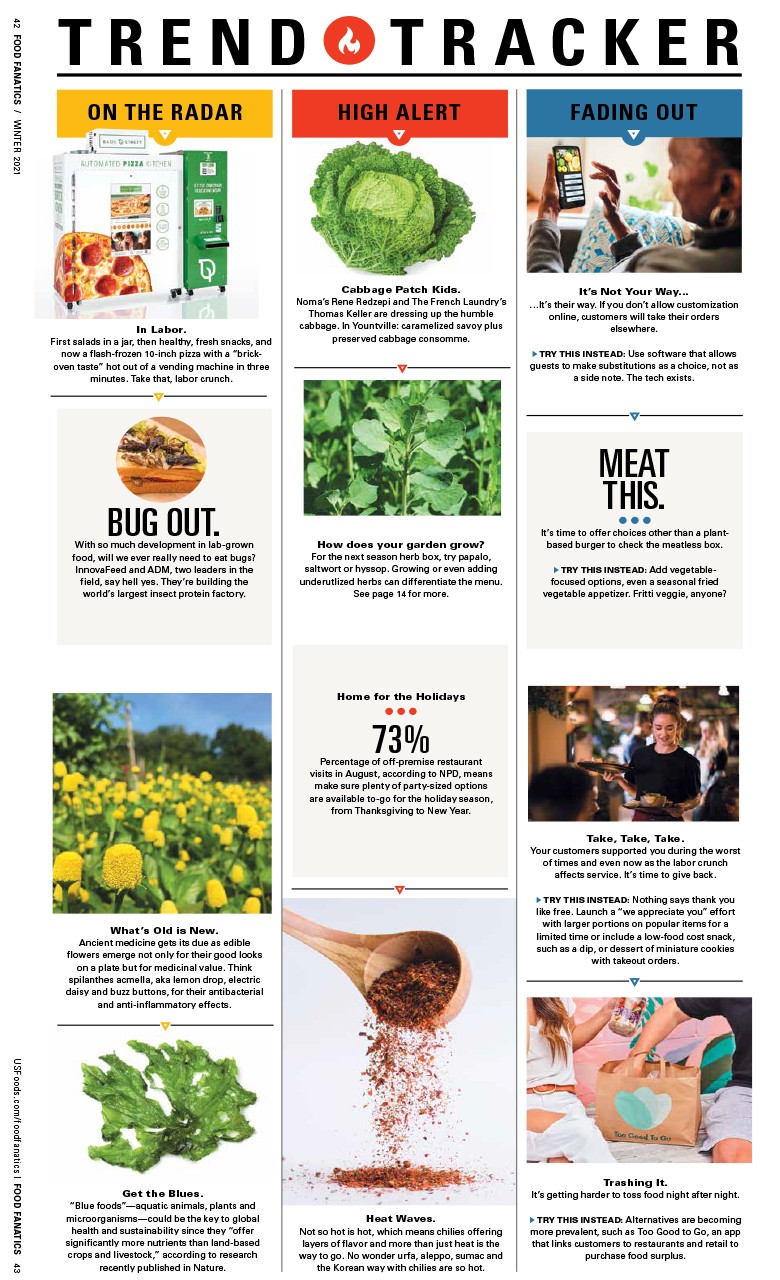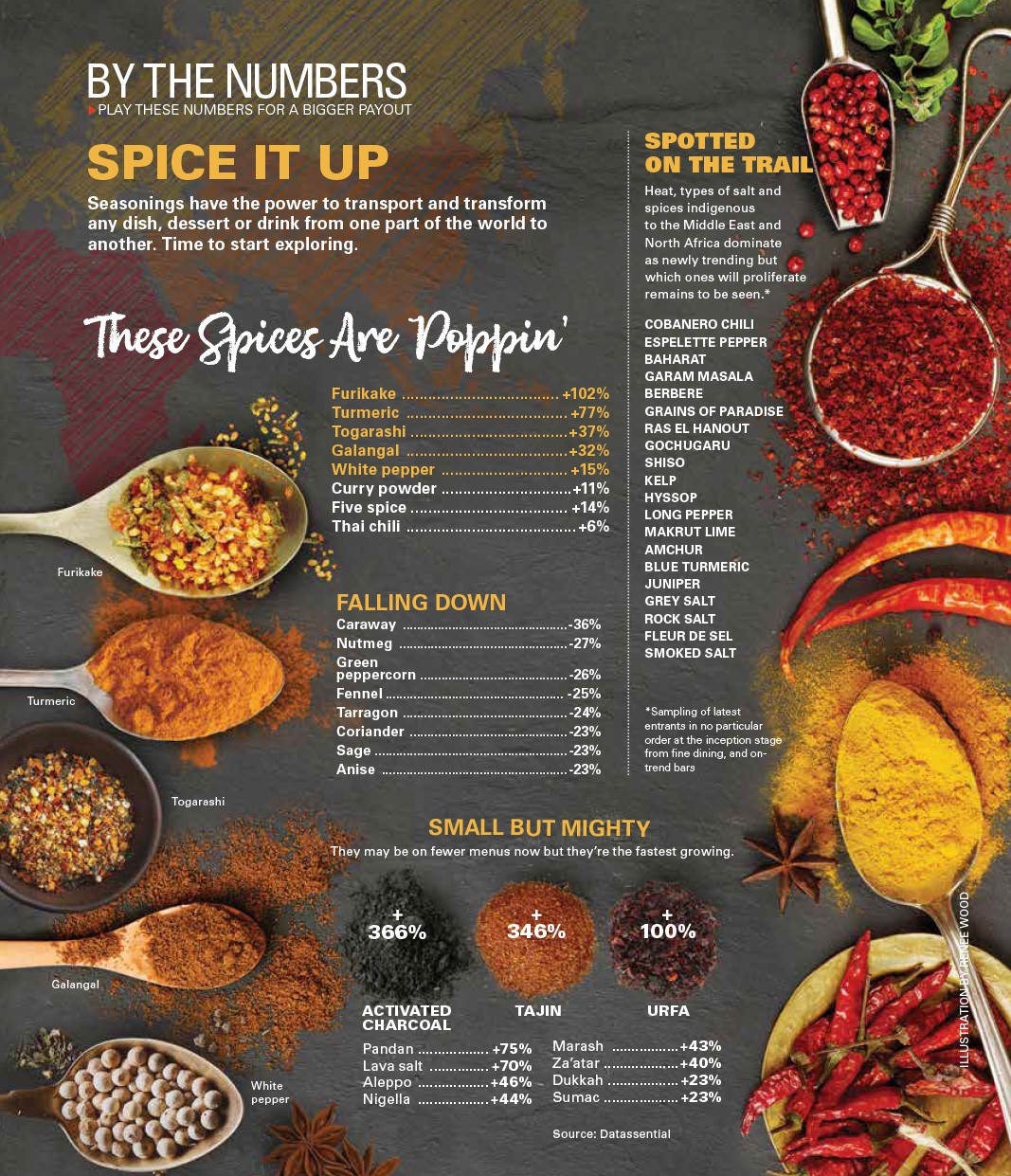IT’S SHOWTIME
Any restaurant can make dining an event, and it doesn’t have to hit you over the head
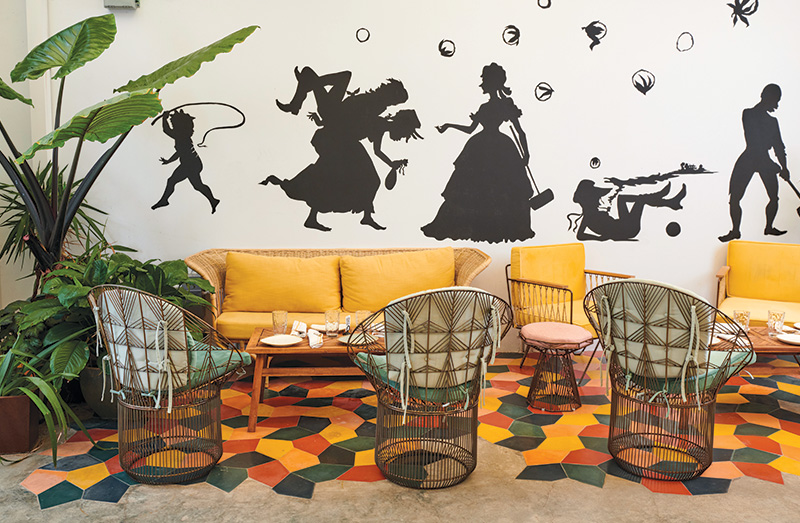 Dining as an event used to mean a couple of things: You were going out for a Big Deal reason and the correspondingly Big Spend. Or it was theater: decor that overwhelmed in good ways and bad; bossy, bold menus and servers coached to deliver attitude as well as food.
Dining as an event used to mean a couple of things: You were going out for a Big Deal reason and the correspondingly Big Spend. Or it was theater: decor that overwhelmed in good ways and bad; bossy, bold menus and servers coached to deliver attitude as well as food.
After 2020 radically altered the dining experience and the hard reset to better times hasn’t happened for everyone yet, creating the right kind of memories in 2022 means understanding that customers are hoping for some delight with their sustenance rather than concept-driven drama.
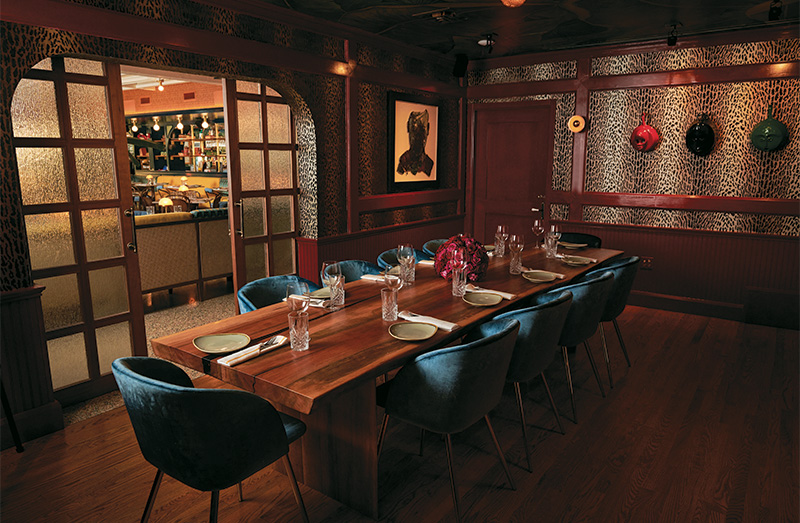 It doesn’t need to be a do-over, but if ever there was a time to find ways to draw back, it’s now. Restaurateurs say it’s a compilation of moves that make eating out feel special, all of which helps to create a mood and something memorable. And that can be achieved in all kinds of ways.
It doesn’t need to be a do-over, but if ever there was a time to find ways to draw back, it’s now. Restaurateurs say it’s a compilation of moves that make eating out feel special, all of which helps to create a mood and something memorable. And that can be achieved in all kinds of ways.
1. UPEND THEIR EXPECTATIONS BY NOT GIVING ANY
At a dinner party, the host doesn’t announce a lineup at the top of the evening. Similarly, you won’t be given a menu at New York City’s Saga, a restaurant collaboration between James Kent, formerly a star chef at Eleven Madison Park and The NoMad Hotel, and Jeff Katz, a longtime managing partner at Del Posto.
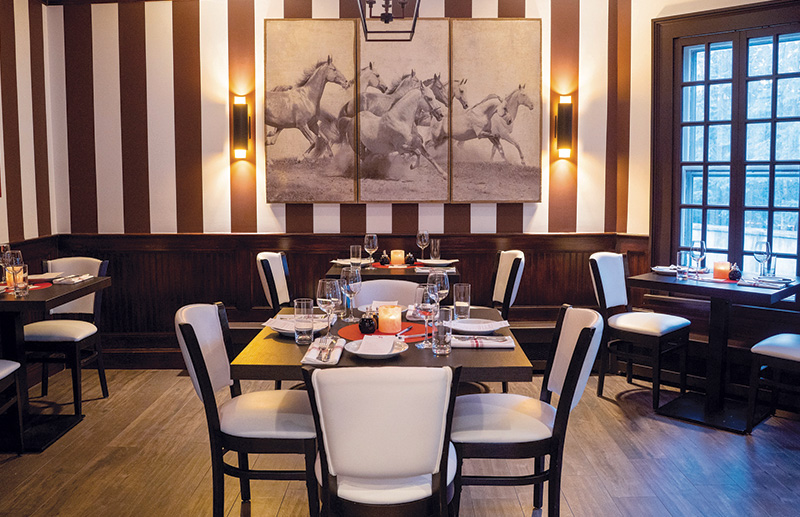 “We purposely don’t want preconceived notions,” Katz says. “Whenever you look through a menu, you are ranking the dishes in your head,” about what you think you like and don’t like and what you already know is going to be your favorite. “We want you to go through the meal without an idea of how it’s going to taste and how it’s going to feel.”
“We purposely don’t want preconceived notions,” Katz says. “Whenever you look through a menu, you are ranking the dishes in your head,” about what you think you like and don’t like and what you already know is going to be your favorite. “We want you to go through the meal without an idea of how it’s going to taste and how it’s going to feel.”
Servers discuss each course with guests, but the only choice for diners is between two entrée options. “It’s a risk,” says Katz, “but we are here to craft evenings and keep people engaged by surprise.”
★ APPLY THIS: Smaller operators can test out this trust exercise at a starter level by offering a no-menu dessert program. Customers are relaxed at this stage of the meal, sugar hits everyone in all the right ways, and they’re likely to find a way to love whatever you set down because the surprise element feels special. Think of it as an amuse-bouche on the back end.

2. A CHANGE OF SCENERY
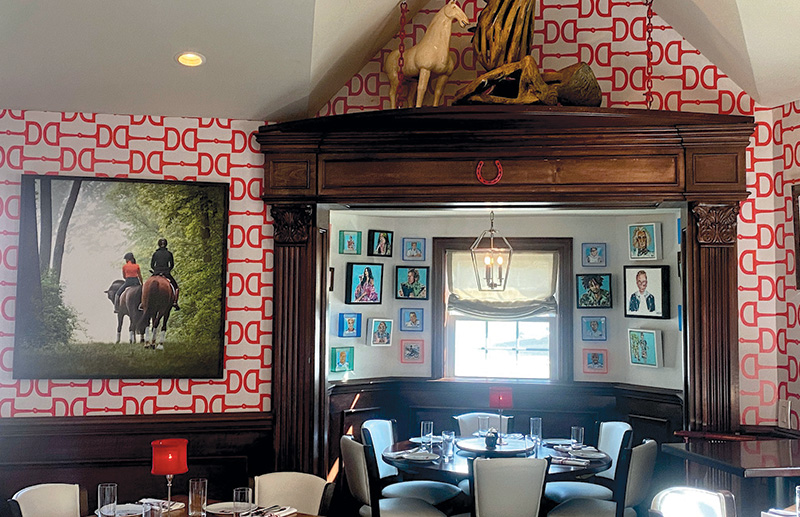 When chef David Burke opened the steakhouse-sushi restaurant Red Horse in Rumson, New Jersey, earlier this year, this hardcore collector made sure the artwork was as obsessively curated as his salt-aged beef cuts. Paintings, photographs, glasswork and a quirky object like a vintage carousel pony are over and around every wall and corner. Marcus Samuelsson’s Red Rooster Overtown in Miami opened at the end of 2020 displaying works from a wide range of African American artists for a thoughtful reflection of – and inspiration to – the menu’s culinary roots. Sona, in New York, is an elegant Indian restaurant with art drawn exclusively from a talent pool of contemporary Indian artists. And Atlas restaurant at the St. Regis Atlanta may be the closest you get to a private collection of Picasso, Monet and Chagall works without a museum guard standing by.
When chef David Burke opened the steakhouse-sushi restaurant Red Horse in Rumson, New Jersey, earlier this year, this hardcore collector made sure the artwork was as obsessively curated as his salt-aged beef cuts. Paintings, photographs, glasswork and a quirky object like a vintage carousel pony are over and around every wall and corner. Marcus Samuelsson’s Red Rooster Overtown in Miami opened at the end of 2020 displaying works from a wide range of African American artists for a thoughtful reflection of – and inspiration to – the menu’s culinary roots. Sona, in New York, is an elegant Indian restaurant with art drawn exclusively from a talent pool of contemporary Indian artists. And Atlas restaurant at the St. Regis Atlanta may be the closest you get to a private collection of Picasso, Monet and Chagall works without a museum guard standing by.
★ APPLY THIS: This isn’t about subtle decor; attention must be paid, and the average restaurant design budget doesn’t quite cover it. But collaborating with a local art school, gallery or private artist for loans, or even investing in a single statement piece, is one way to spark a conversation.
3. FLIP THE SCRIPT
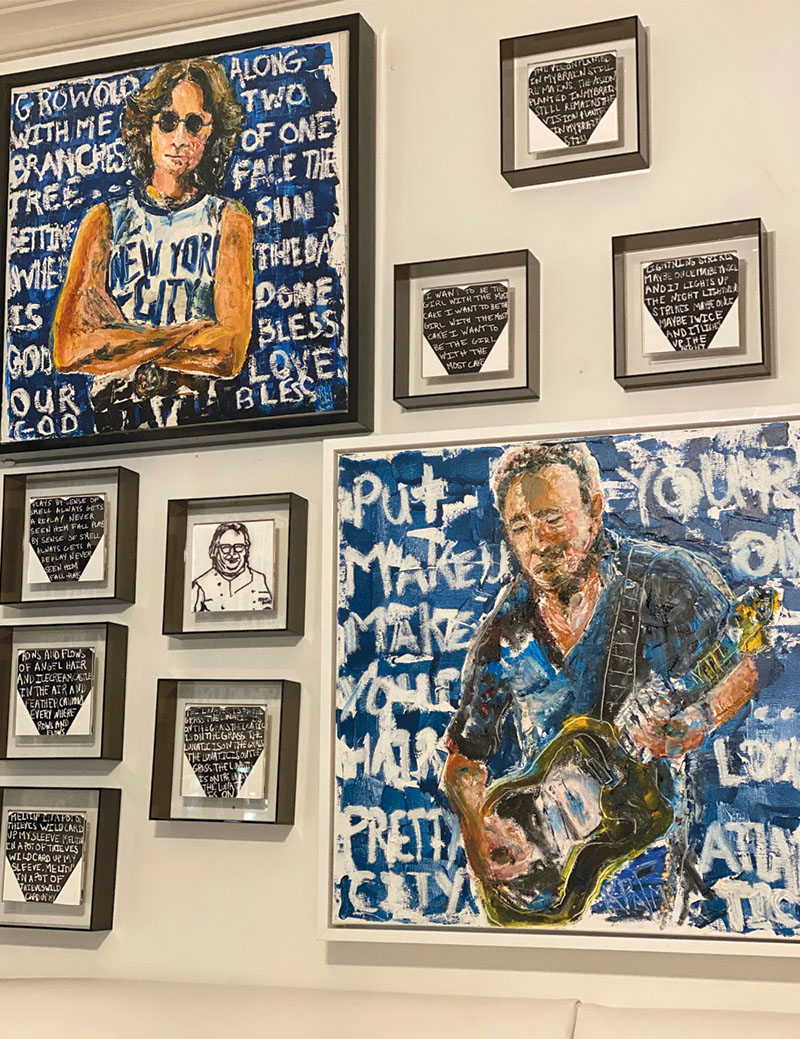 Operators big and small already have done the hard math to make sure every square foot delivers profit while the doors are open. Over the last few years, operators have been turning underutilized space into different concepts, sometimes complementary to the existing one while other times completely different. It’s not new, but maybe now is the time to repurpose part of the dining space into a coffee bar or to-go meal grocery.
Operators big and small already have done the hard math to make sure every square foot delivers profit while the doors are open. Over the last few years, operators have been turning underutilized space into different concepts, sometimes complementary to the existing one while other times completely different. It’s not new, but maybe now is the time to repurpose part of the dining space into a coffee bar or to-go meal grocery.
★ APPLY THIS: A project from ROY, a hospitality design studio in San Francisco known for stylish California spaces, including the redesign of SPQR, hopes to avoid any letup in traffic, with a hybrid counter-service model that’s a juice bar by day and a cocktail bar at night. It seeks to appeal to the remote and in-person office workers and others in the neighborhood who will drive multiple income streams in a venue they can visit before, during and after work and get a different experience each time. It will be partly implemented by concealing the liquor bottles behind a screen, enhancing the light and placing fresh fruit on the counter for the daytime service, and bringing the lights down and bottles out at the cocktail hour.
“I think most operators are in the process of rethinking their strategy and keeping an extremely small staff,” says Hannah Collins, principal designer and founder of ROY. “The footprints are getting more intimate. There’s no reason to limit to just one kind of service.”
4. LIGHT TOUCH WAITSTAFF
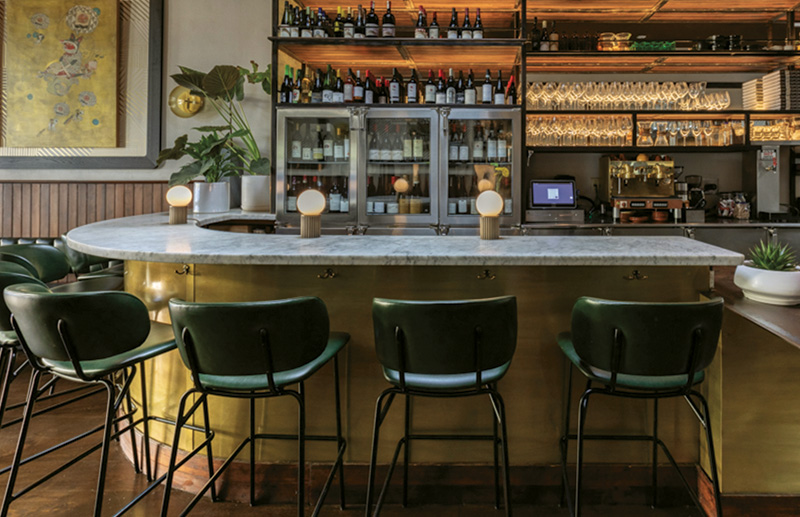 So much of what scared people over the past two years related to our proximity to other people and then places and things. Contactless delivery, contactless payment and online-only ordering seemed like the opposite of hospitality at first, then exactly what everyone wanted.
So much of what scared people over the past two years related to our proximity to other people and then places and things. Contactless delivery, contactless payment and online-only ordering seemed like the opposite of hospitality at first, then exactly what everyone wanted.
As diners return to the table, smart restaurant operators understand that the desire to reconnect doesn’t extend to server intrusion during mealtime. At Ever in Chicago, the service team understands that if they approach the table and notice you’re still eating, they immediately turn around, so guests won’t feel any pressure to finish. Saga’s system is that plates are served as unobtrusively as possible, and wait staff gets in and gets out. The choreographed hovering to place the incoming entrée can be an automatic buzzkill. And anyone still training staff to crash into a conversation with, “So how’s everything going here?” needs to rethink the approach.
★ APPLY THIS: Even stretched-thin servers at a busy casual restaurant should be encouraged to read the table and see if their presence is wanted. Are peoples’ heads together? Is someone telling a story? Is a guest dreamily diving into their dish of pasta? Unless someone’s obviously scanning the room, there’s no reason to rush right over. Hold back until the guests let you into their meal.
5. LIKE HOME, BUT BETTER
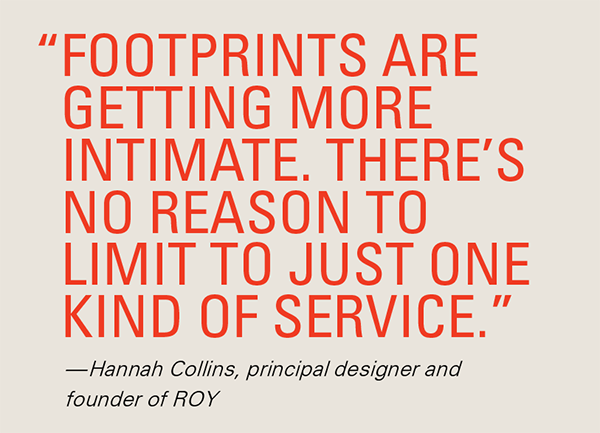 At Saga, located on the 63rd floor of a 970-foot-tall skyscraper, the dining areas are divided into multiple rooms that lead to outdoor terraces, while the bar area greets guests as they exit the elevator. Guests are encouraged to explore all the areas, as if they’re at someone’s dream home for dinner and taking a self-guided tour.
At Saga, located on the 63rd floor of a 970-foot-tall skyscraper, the dining areas are divided into multiple rooms that lead to outdoor terraces, while the bar area greets guests as they exit the elevator. Guests are encouraged to explore all the areas, as if they’re at someone’s dream home for dinner and taking a self-guided tour.
★ APPLY THIS: Encouraging guests to get up and move during dinner so it feels more like an experience can be done by suggesting dessert on the outdoor patio or after dinner drinks at the bar. Depending on your setup, it can also entail a walk through the kitchen for early or late reservations when the area is less hectic.
6. PREP WORK
Do what you can to manage the guest experience before they even walk in. With dining out so often fraught with restrictions, updates, mandates and menu changes, pretty much every guest in the place will have checked out your website in advance.
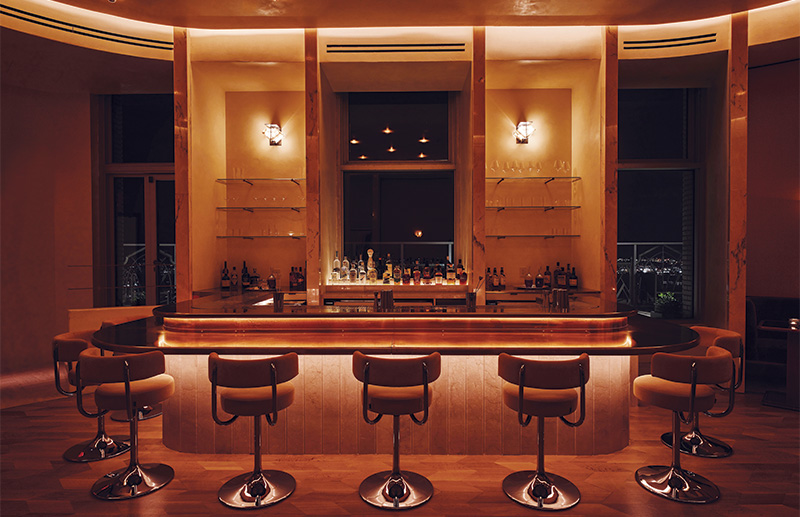 ★ APPLY THIS: Many restaurants might have alerts on their websites about coronavirus masking and dress codes, but Liholiho Yacht Club in San Francisco has a full page devoted to another anxiety-filled experience: being a walk-in. Offer guests details such as what the wait would be like if you show up without a reservation on a Friday night; allow ample time for parking; bring a sweater. It’s like your mom is waving you out the door, but you know what?
★ APPLY THIS: Many restaurants might have alerts on their websites about coronavirus masking and dress codes, but Liholiho Yacht Club in San Francisco has a full page devoted to another anxiety-filled experience: being a walk-in. Offer guests details such as what the wait would be like if you show up without a reservation on a Friday night; allow ample time for parking; bring a sweater. It’s like your mom is waving you out the door, but you know what?
These days, diners venturing into the world are already girding themselves against a certain measure of stress, so a bit of warmly expressed, “We get it, and we’ll look after you,” messaging sets everyone off on the right course.


